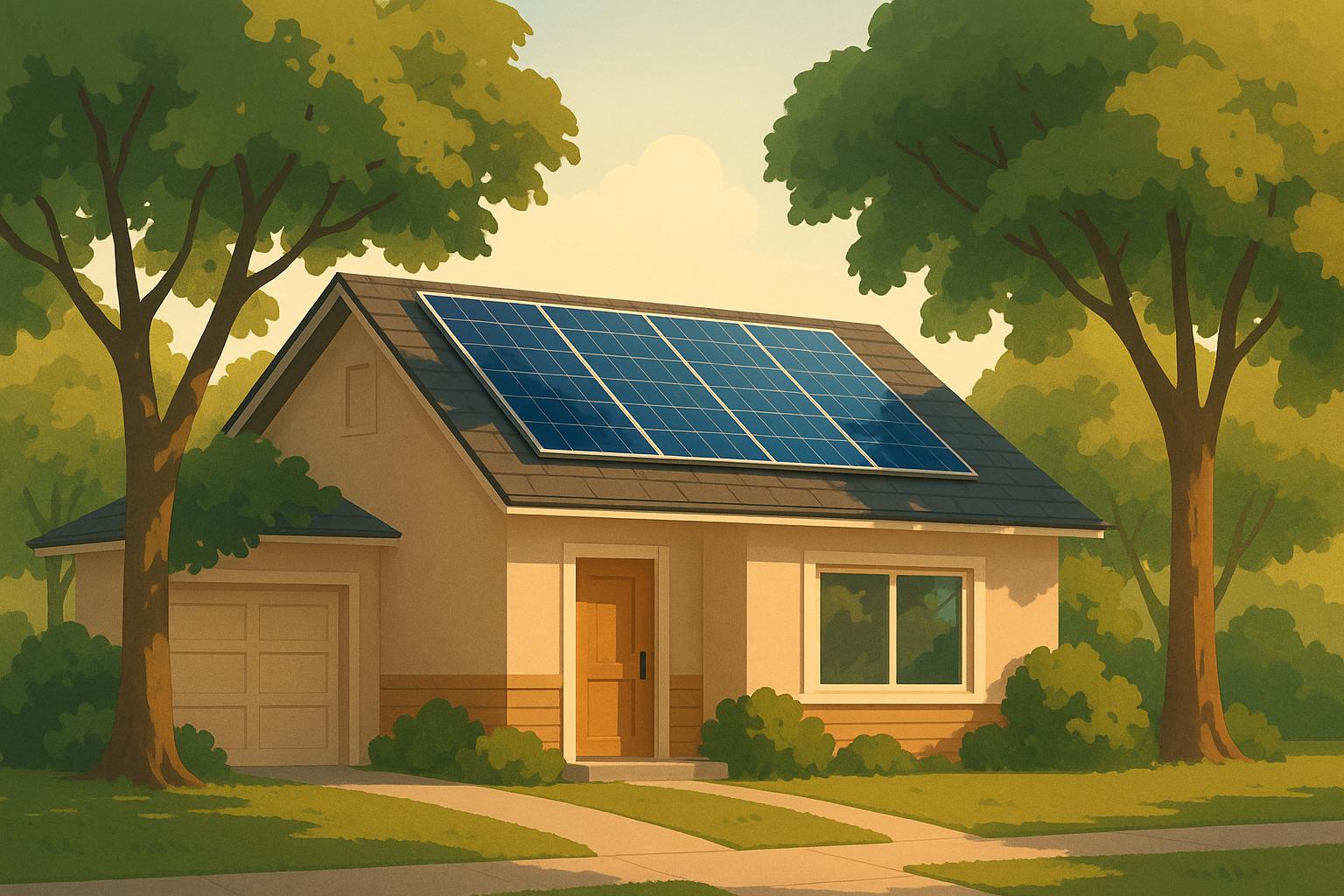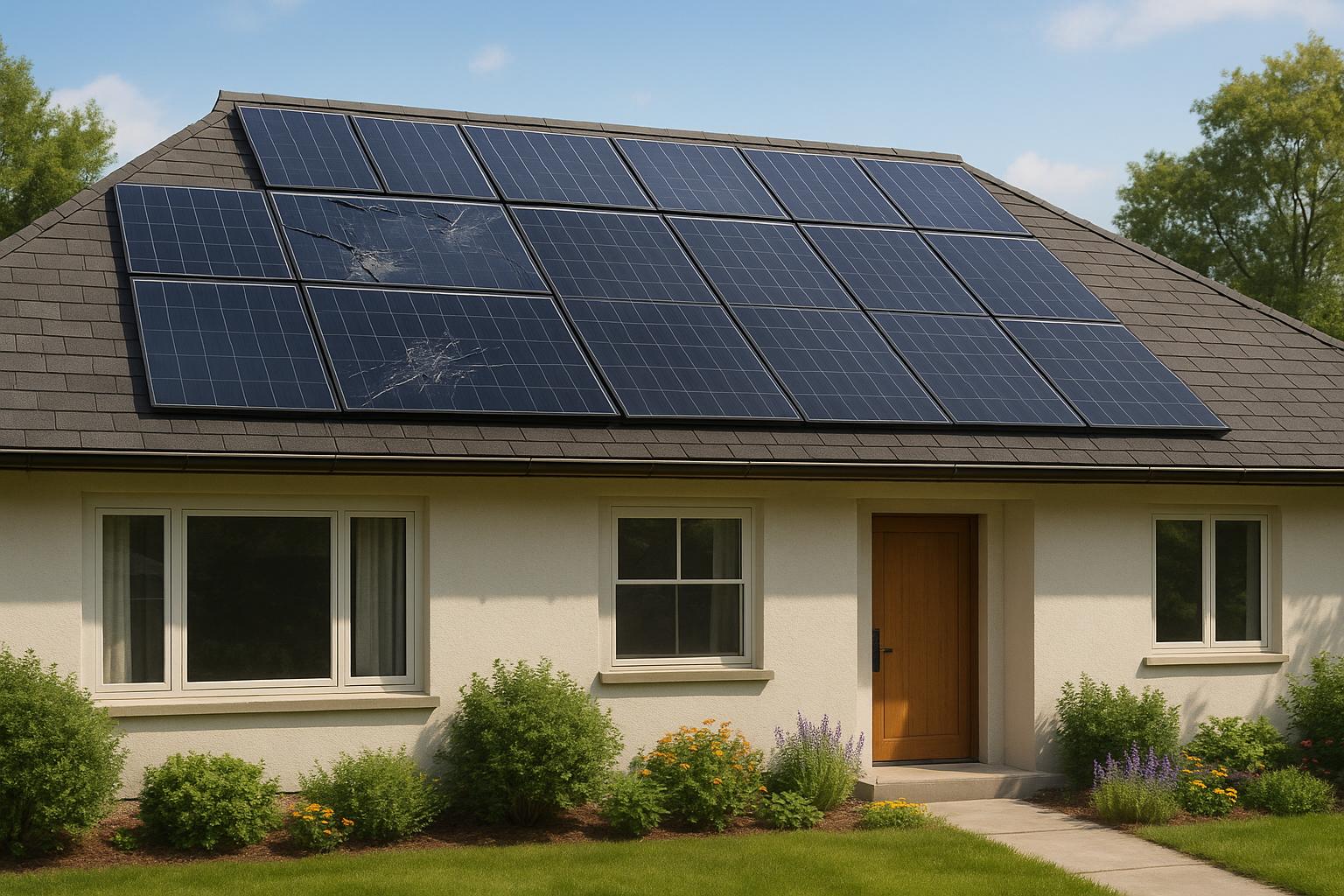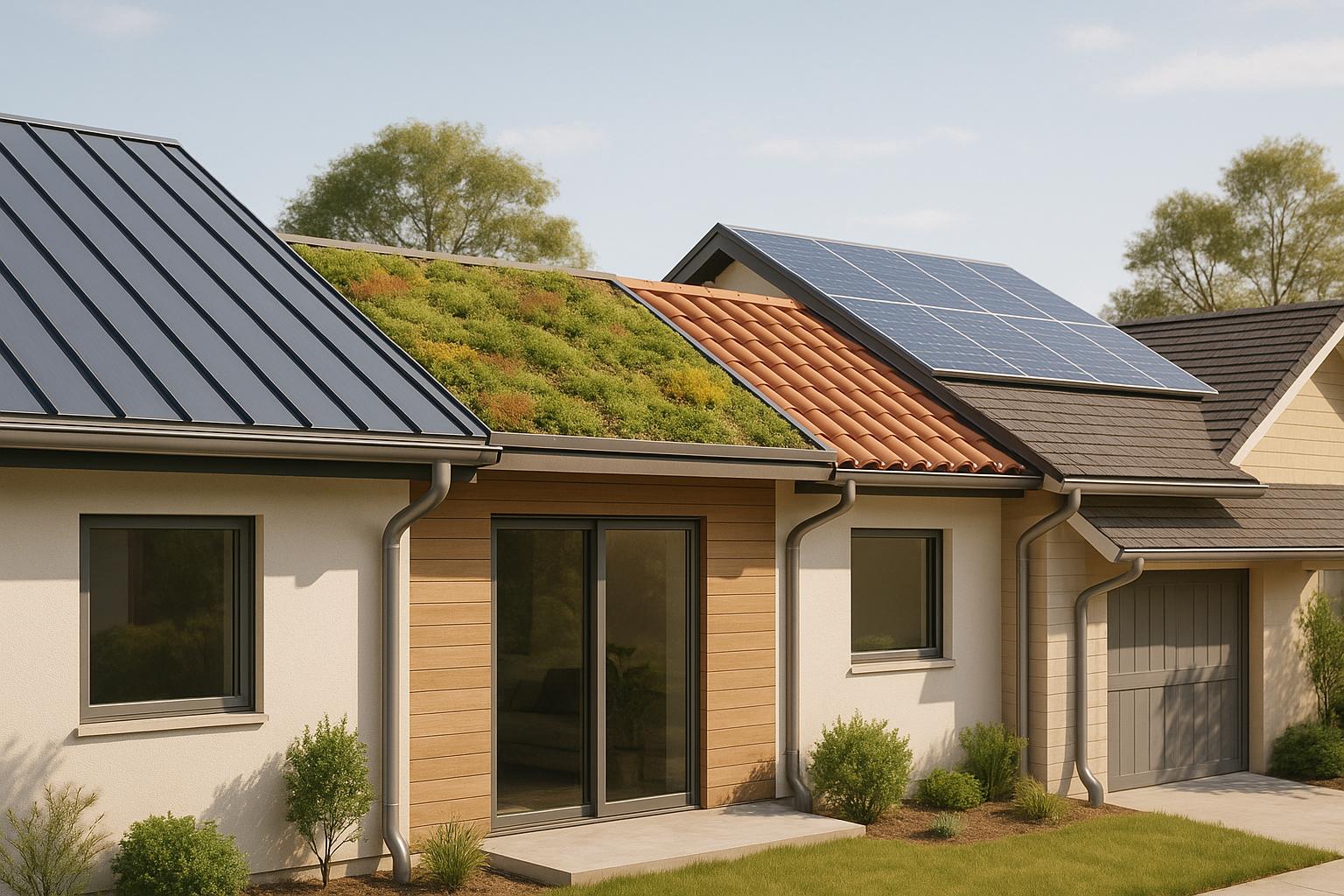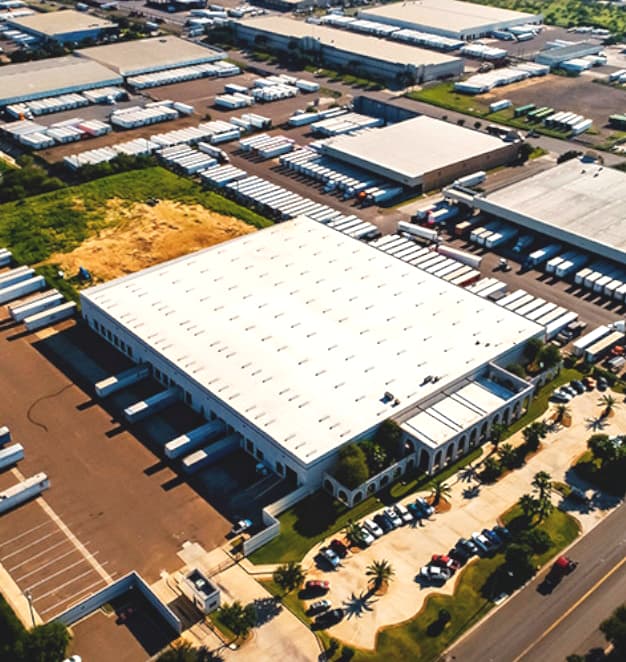Can you have trees and solar panels? Yes, you can. Balancing tree shade and solar energy is a common challenge for Los Angeles homeowners. While trees provide natural cooling, their shade can lower solar panel efficiency. Here’s how you can enjoy both:
- Tree Pruning: Trim branches to reduce shade while keeping trees healthy ($300–$800 per tree).
- Reposition Panels: Move panels to sunnier spots on your roof or yard ($1,500–$3,000).
- Use Advanced Tech: Install microinverters or high-efficiency panels to minimize shade impact (extra $1,000–$4,000).
- Professional Help: Experts can analyze shade patterns and optimize your setup for LA’s unique conditions.
With smart planning, tools like solar mapping, and expert advice, you can maximize solar energy without sacrificing your trees.
How Tree Shade Affects Solar Panels
How Tree Shade Affects Solar Panel Output
For Los Angeles homeowners, understanding the impact of tree shade on solar panels is key. Even a small amount of shade can significantly lower energy production and may lead to long-term damage. Let’s take a closer look at how shade disrupts solar panel performance.
How Shade Impacts Solar Panels
When part of a solar panel is shaded, it interrupts the flow of electricity. Because panels are usually wired in series, a shadow on one section can reduce the efficiency of the entire system. Shaded cells can also overheat, creating "hotspots" that can permanently damage the panel.
Here’s what happens when panels are exposed to consistent shading:
- Energy output drops significantly.
- Efficiency is reduced, especially during peak sunlight hours.
- Hotspots can shorten the lifespan of the panel.
- Seasonal changes can cause fluctuations in system performance.
Shade Challenges in Los Angeles
Local conditions in Los Angeles add another layer of complexity to shading issues. The city’s urban forest – featuring tall palms and wide-canopied trees like oaks and jacarandas – creates varying shadow patterns throughout the day.
Los Angeles’ Mediterranean climate keeps trees lush year-round, meaning their shadows are a constant concern. Mature trees in urban neighborhoods often cast large shadows over rooftops.
Factors that influence shading in LA include:
- Tree density: Many neighborhoods have dense tree canopies.
- Property layout: Homes are often close to mature trees, increasing shadow coverage.
- Seasonal sun angles: Even small shifts in the sun’s position can change shading patterns.
- Building orientation: Many homes aren’t ideally positioned for maximum solar exposure, making shade management even more important.
To reduce the impact of tree shade, homeowners should regularly monitor shading patterns during different seasons and times of day. This can help optimize panel placement while still enjoying the benefits of tree cover. Proper planning and maintenance ensure solar panels operate efficiently despite these challenges.
Measuring Shade Impact on Your Home
Accurate shade measurement is key to deciding where to place solar panels. Homeowners in Los Angeles need reliable data to make smart choices about panel placement and tree management.
Tools for Shade Analysis
Here are some tools to help you evaluate shade patterns on your roof:
- Solar Pathfinder: Tracks the sun’s path and highlights shaded areas on your roof.
- Digital Sun Charts: Smartphone apps that use your camera and GPS to show shade coverage throughout the year.
- LIDAR Mapping: Creates detailed 3D maps of your property to predict how shadows will move.
For those who prefer a DIY approach, you can:
- Observe and document how shade changes with the seasons, paying attention to tree height and distance.
- Use a basic inclinometer to track sun angles.
- Keep a record of daily and seasonal shade patterns.
These methods provide a solid starting point before consulting a professional.
Expert Shade Assessment
Certified solar technicians bring advanced tools and expertise to the table. They can:
- Deliver detailed shade analysis reports.
- Calculate energy loss caused by shade.
- Pinpoint the best spots for panel placement.
- Suggest tailored solutions for your property.
"Working in a professional and responsible team is essential for delivering high-quality roofing services. Collaboration ensures that each aspect of the project, from initial assessment to final installation, is executed with precision and expertise." – Tony Mirzakhanyan, Head of Prime American Roofing
The professional shade assessment process typically involves:
1. Site Survey
Technicians measure your roof’s dimensions, orientation, and pitch to gather precise data.
2. Shade Study
Using solar mapping tools, they create hour-by-hour projections of shade, factoring in tree growth and its impact on solar panels.
3. Performance Modeling
Computer simulations estimate energy production based on the shade patterns identified.
Local experts also account for Los Angeles-specific factors such as:
- Native tree growth patterns.
- Seasonal sun angles unique to Southern California.
- Local building codes and regulations.
- Neighborhood-specific shade issues.
Ways to Fix Tree Shade Problems
With a clear understanding of shade issues, homeowners can take steps to improve solar panel performance without sacrificing the beauty and health of their trees. Here are some practical solutions to tackle shading problems.
Smart Tree Pruning
Hiring a professional arborist for selective tree pruning can reduce shading on your solar panels while keeping your trees in good shape. This approach involves trimming specific branches to allow more sunlight through, without altering the tree’s natural look or health. A trained expert can recommend the best pruning methods and timing for your particular trees.
Adjusting Panel Placement
If shading is unavoidable, consider repositioning your solar panels. Focus on areas with the least shade, adjust the orientation to capture maximum sunlight, or use multiple roof sections to optimize exposure. Ground-mounted systems are another option, as they can be installed in open, sunny spots. When placement adjustments aren’t enough, advanced panel technology can help bridge the gap.
Advanced Panel Technology for Shading
Modern solar panels come with features that minimize energy loss due to shading. Microinverters and power optimizers ensure that shaded panels don’t drag down the performance of the entire system. Bifacial panels, which can capture sunlight from both sides, are also a smart choice for areas with partial shade.
Using one or a combination of these strategies can help you manage tree shade effectively while maintaining a balance between solar efficiency and your landscape.
sbb-itb-d1d6490
Expert Help for Shaded LA Homes
Shaded properties in LA often require the knowledge of professionals who understand the area’s native trees, climate, and solar energy requirements. These experts can provide tailored solutions to ensure your solar setup performs efficiently.
Local Expert Solutions
LA’s urban landscape and climate create unique challenges for solar installations. A professional evaluation ensures your system is designed to fit your property’s specific needs. Key factors considered include:
- Orientation and roof structure: Determines the best placement for solar panels.
- Local tree species and growth patterns: Helps anticipate future shading issues.
- Seasonal sun patterns: Accounts for the sun’s movement at LA’s latitude.
- Southern California building codes: Ensures compliance with local regulations.
Prime American Roofing‘s Solar Options

Prime American Roofing offers a step-by-step approach, starting with a detailed property assessment. Here’s what the process looks like:
| Assessment Phase | Key Components | Benefits |
|---|---|---|
| Initial Inspection | Roof condition analysis and shade mapping | Identifies structural needs and shade areas |
| Technical Planning | Optimizes panel placement and selects equipment | Boosts energy output, even in shaded spots |
| Implementation | Professional installation and system integration | Ensures long-term efficiency and durability |
| Maintenance | Regular monitoring and performance checks | Keeps the system running at peak performance |
This thorough process combines roofing expertise with solar technology to address both current shading and potential future tree growth. Available solutions include:
- Strategic panel placement to reduce shading effects.
- High-efficiency panels designed to perform well in partial shade.
- Advanced mounting systems to maximize sun exposure.
- Seamless integration with your existing roof structure.
Shade Solution Options
When it comes to improving solar panel performance for LA homes, there are several practical solutions to consider. Each option comes with its own costs, benefits, and considerations, making it easier to find the right fit for your property.
Solution Comparison Table
| Solution Approach | Average Cost Range | Energy Improvement | Implementation Time | Maintenance Needs |
|---|---|---|---|---|
| Strategic Tree Pruning | $300-$800 per tree | 15-30% increase | 1-2 days | Annual trimming |
| Panel Repositioning | $1,500-$3,000 | 20-40% increase | 2-3 days | Minimal |
| High-Efficiency Panels | Additional $2,000-$4,000 | 25-35% better shade tolerance | 1-2 days | Standard cleaning |
| Microinverter Systems | Additional $1,000-$2,000 | Up to 25% better performance in shade | 1-2 days | Minimal |
Exploring the Options
Strategic Tree Pruning
Hiring professional arborists to trim trees can significantly boost solar exposure while maintaining the trees’ health and aesthetic appeal. However, this solution requires annual upkeep to remain effective.
Panel Repositioning
This approach works well for homes with varied roof designs. By repositioning panels for optimal sunlight exposure, you can improve energy output without compromising nearby tree health.
High-Efficiency Panels
If removing all shade isn’t possible, high-efficiency panels are a great choice. They’re designed to perform well in partially shaded conditions, making them ideal for many LA properties.
Microinverter Systems
Microinverters allow each panel to function independently, reducing the impact of partial shading on the overall system. This setup is especially useful for properties where shade patterns shift during the day.
A professional evaluation can help determine which of these solutions – or a combination of them – best suits your home’s specific needs.
Conclusion: Balancing Tree Shade and Solar Efficiency
Homeowners in LA can enjoy the benefits of natural tree shade while maximizing solar energy production by using smart strategies that maintain their property’s aesthetic appeal and energy efficiency. Techniques like selective pruning and using advanced solar panel technologies can help you achieve both goals.
Today’s solar systems are designed to address shading challenges, offering options like high-efficiency panels and systems optimized for shaded areas. These advancements make it possible to keep your tree canopy intact while still generating plenty of energy.
FAQs
How can I figure out the best spot for solar panels if my property in Los Angeles has shade from trees?
To find the ideal placement for solar panels on a shaded property in Los Angeles, it’s essential to evaluate your roof’s layout, sun exposure, and shading patterns. A professional assessment can help identify the best locations to maximize sunlight capture while minimizing the impact of shade.
Expert services can assist in creating a customized plan for your solar panel installation, ensuring optimal efficiency and compatibility with your property’s unique conditions. This approach ensures you make the most of your investment while maintaining the aesthetic and functionality of your home.
What should homeowners know about maintaining solar panels in areas with partial tree shading?
Maintaining solar panels in areas with partial tree shading requires some extra attention to ensure optimal performance. Regular cleaning is essential to remove dirt, debris, and leaves that may accumulate, especially in shaded spots, as this can reduce energy efficiency. It’s also a good idea to schedule periodic professional inspections to check for any wear, damage, or issues caused by shading.
If trees are causing significant shading, consider routine trimming to minimize obstruction. Additionally, installing microinverters or power optimizers can help maximize energy output in shaded conditions by allowing each panel to operate independently. These steps can help ensure your solar panels perform efficiently, even in partially shaded environments.
What solar solutions work best for homes in Los Angeles with significant tree shading?
When your property has substantial tree shading, it’s essential to choose solar solutions tailored to maximize energy production in low-light conditions. Microinverters and power optimizers are excellent technologies for these scenarios. They allow individual solar panels to operate independently, ensuring shaded panels don’t reduce the efficiency of the entire system. Additionally, high-efficiency solar panels designed to perform better in partial shade can be a great option.
If you’re considering solar installation, consult with a professional to assess your property’s shading and recommend the best setup. In Los Angeles, companies like Prime American Roofing provide expert solar panel installation services and can help ensure your system is optimized for your specific conditions.





